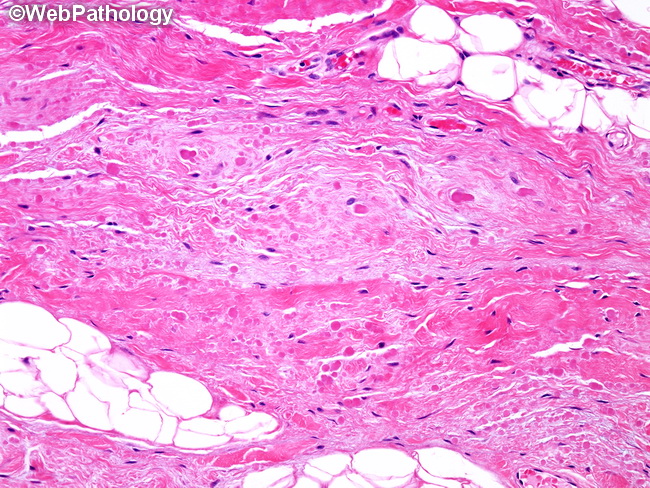Elastofibroma : Pathogenesis


Comments:
Pathogenesis: The pathogenesis of elastofibroma is not completely understood. Between 30% to 50% of cases are familial, indicating a genetic predisposition. Many patients have history of manual labor or repetitive minor trauma. This has led to the suggestion that degenerative changes in elastic fibrous tissue due to friction between the scapula and the thoracic wall play a role. Cytogenetic studies of a few cases of elastofibroma have revealed numerous clonal and nonclonal structural changes, including gains of 6p25-q25 and Xq12-q22 and losses of 1p, 13q, 19p, and 22q. Deletions of CASR, GSTP1, BRCA2, and gains of APC and PAH have also been reported. These discoveries suggest that elastofibroma is possibly a neoplastic process. However, the exact role played by these genetic abnormalities requires further study.



